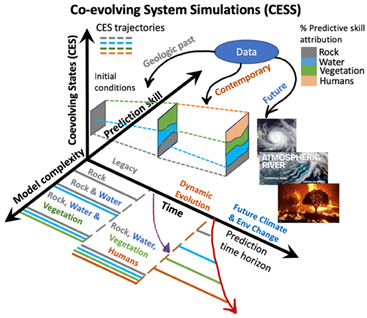
A common thread across each of the four research thrusts (Legacy, Predictably, Dynamic Evolution, Future Environmental Change), and more generally in building resilient communities in the face of landslide hazards, is learning by exploring models and data together. Today’s growing volume and quality of lidar topography and other forms of remote sensing data, together with the emergence of new analytics tools, presents a unique opportunity to advance landslide science. In particular, we have an opportunity to develop an integrated mechanistic understanding of landslides and their downstream impacts—a quantitative framework that can account for the role of landsliding in producing today’s landscapes (Legacy), that can make accurate forecasts not just of susceptibility but also of landslide form and frequency (Predictability), that can account for dynamic changes in landslide behavior as humans and other geomorphic agents alter the landscape (Dynamic Evolution), that can help us plan for a future world under a changing climate (Future Environmental Change), and give communities and decision-makers the information they need to be more resilient when living among landslides.
